

Damion Smy
Suzuki Fronx scores one-star ANCAP rating after seatbelt failure
8 Hours Ago
The Vitara is one of the most enduring SUV nameplates in Australia, but has it moved swiftly enough with the times to remain relevant?
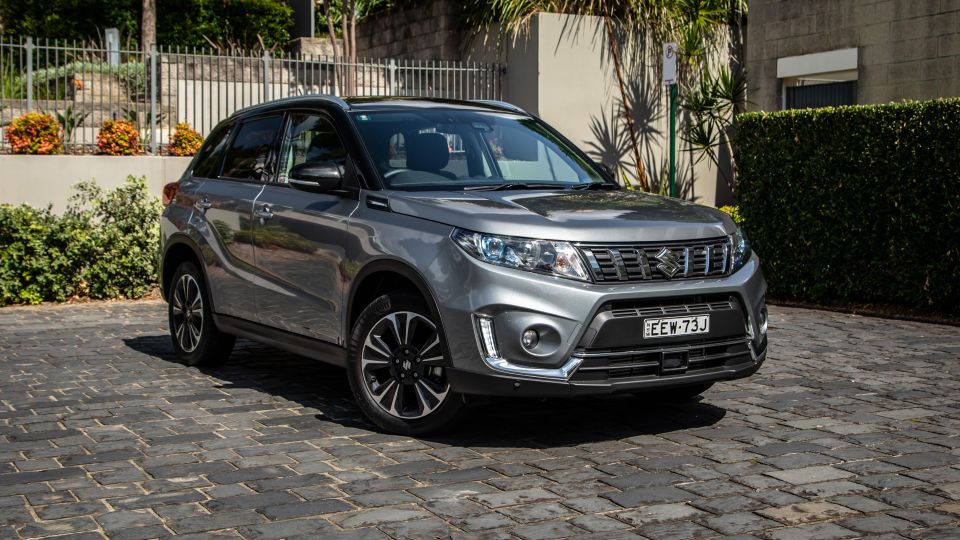
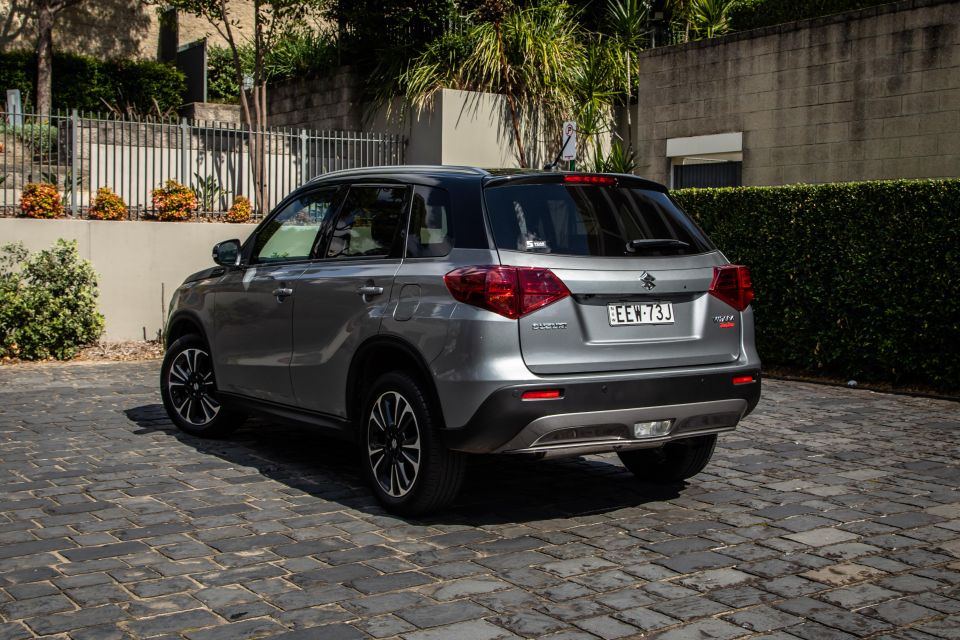

Journalist
New from
$25,490
excl. on-roads

Journalist
New from
$25,490
excl. on-roads


Journalist
New from
$25,490
excl. on-roads

Journalist
New from
$25,490
excl. on-roads
Quickly see how this car stacks up against its competition. Select any benchmark to see more details.
Where expert car reviews meet expert car buying – CarExpert gives you trusted advice, personalised service and real savings on your next new car.
My neighbour owns a current fourth-generation Suzuki Vitara in earthy Savannah Ivory, and it’s fair to say she’s a key buyer demographic: mid-20s, urbanite, who likes cars and the Suzuki brand.
Consciously or not, the Vitara is safe territory for her as the nameplate has been around for her entire lifetime.
Rewind three generations and the Suzuki Vitara first lobbed into Australia in 1992 with a charmingly boxy body, unpretentious vibe and modest 1.6-litre naturally-aspirated engine. Three decades along the Vitara is still kicking about, hallmarks carried through even if the off-road rough and tumble has today morphed more into an urban-centric crossover.

Times and expectations change and today’s fourth-generation car brings with it turbo power, a contemporary suite of active safety, and modern must-haves such as smartphone mirroring, though for first two you need to dodge the base version and climb straight into the Turbo.
Let’s face it, if the Suzuki Vitara Turbo is in your crosshairs, then the extra punch its engine offers over the base version is the primary lure (and its fulsome safety fit-out really should be considered a deal-sealer).
It’s also fair to consider the mid-spec Turbo as becoming increasingly crucial to Vitara’s local fortunes, given newcomer MG is making turbo family hauling ever more affordable and enticing.
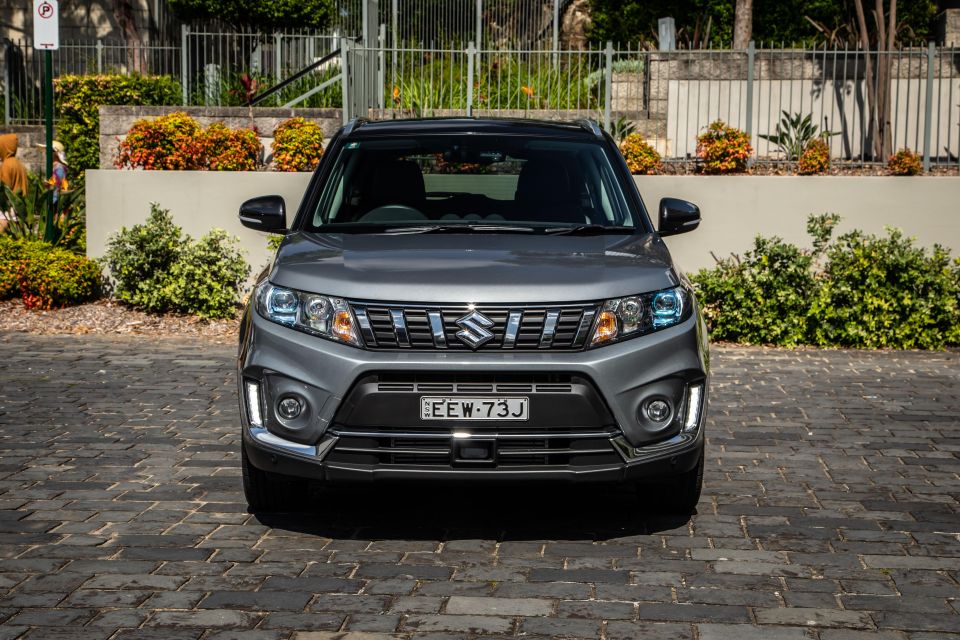
The 2021 Suzuki Vitara Turbo lists for $30,490 before on-road costs and is only available with an automatic transmission.
That’s a whopping $7500 more than the base manual Vitara ($22,990 list) and a still-sizeable leap up from the base auto version ($24,990 list). However, the all-you-can-eat Turbo AllGrip sits a further $4000 up the fiscal tree ($34,990 before on-roads).
At the time of writing, Suzuki promoted a cleanskin Turbo in Cool White at $32,990 drive-away.
There are eight colours available, with single-tone premium hues asking $695 and two-tone finishes, such as our test car’s Galactic Grey and Cosmic Black roof, wanting for a cool $1295, or a total of $34,285 drive-away as tested.
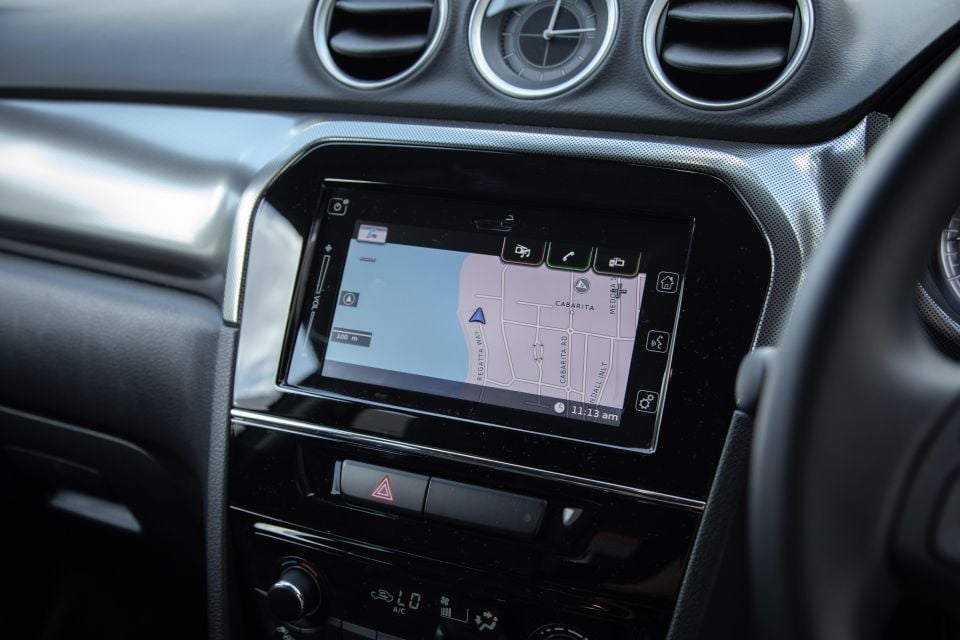
Unlike the thrifty base Vitara, there’s a sizeable choice of small-SUV alternatives for around the $30,000 mark, though very few offer turbocharged motivation – one particular exception being Suzuki’s own S-Cross Turbo Prestige ($29,990) crossover wagon.
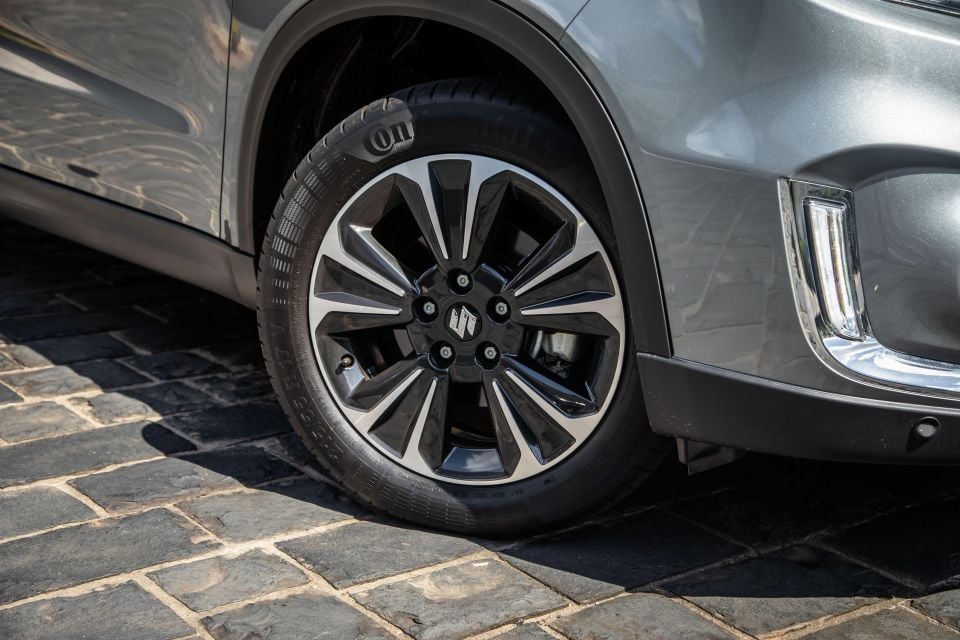
Buy your new car without the stress. It's fast, simple and completely free.

Great service from Travis and team, second time I have used this business would not hesitate to recommend them to anyone
Craig C.
Purchased a Ford Ranger in Sunshine Coast, QLD
CarExpert helped Craig save thousands on his Ford Ranger, now let us save you on your next new car.
Find a dealIt’s fairly cut and dried: the dividend for the Turbo’s extra $5500 investment over the base automatic is largely the addition of the lustier powertrain and the more expansive safety suite.
Outside, the Turbo has polished 17-inch alloys, dusk-sensing LED headlights, adaptive cruise, power windows, front and rear parking sensors, a reversing camera, keyless go, power-folding mirrors and rain-sensing wipers.
Inside, the Turbo has manual seating with leather-accented and suede trim, single-zone climate control and a 7.0-inch touchscreen infotainment system with proprietary sat-nav, Apple CarPlay and Android Auto mirroring, plus six-speaker audio that adds a pair of tweeters over the base car.
There’s a single 12-volt outlet and USB port, plus a large analogue clock for a dash of old-school ‘premium’ Japanese nostalgia.

In short, yes. But it’s slightly complicated. ANCAP awarded Vitara a five-star rating back in 2016 covering all available variants at time from 2015 build onwards.
It was an older testing regime with a frontal offset score of 14.79 out of 16, side impact score of 16.00 out of 16, and rating ‘good’ for both whiplash and pedestrian protection, despite stipulation in the report that, at the time, there was no collision avoidance offered by way of AEB or lane support.
Fast forward to 2019’s facelift and Vitara’s safety equipment suite expanded significantly, boosting the credentials of the Turbo and Turbo AllGrip specifically – the base version still lacks AEB of any sort, standard or optional.
ANCAP’s report on Vitara was updated in sympathy of the changes.
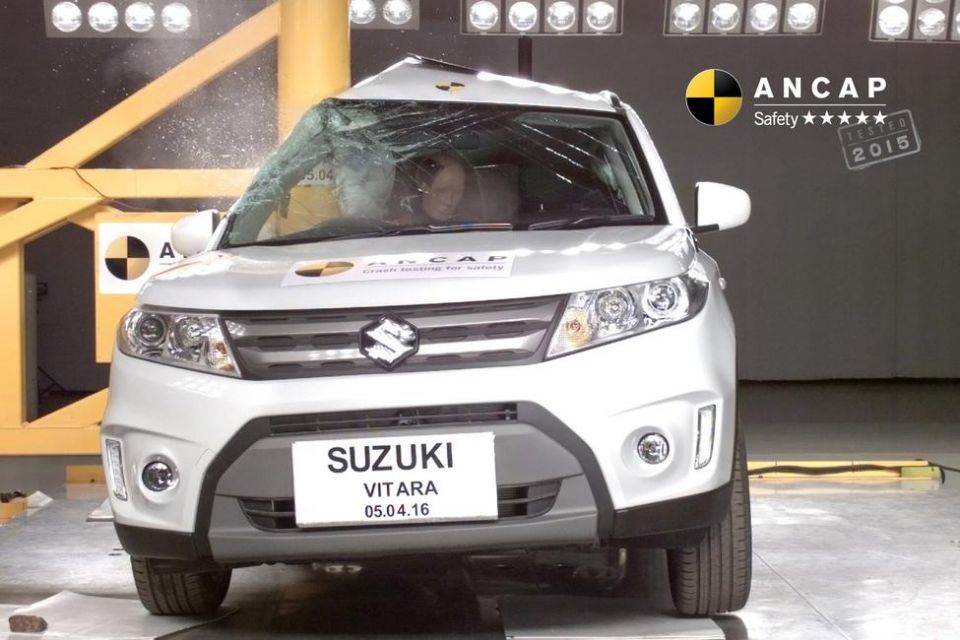
In current guise, the Vitara Turbo gets camera/laser-based autonomous emergency braking, adaptive cruise control, blind-spot monitoring, lane departure warning, a weaving alert (at speeds above 60km/h), and rear-cross traffic alert.
There’s no active lane-keeping or lane following functionality, but what the Turbo does have is a big reason why it should be considered the default entry point into the Vitara range.
It also has seven airbags with front, side, curtain and driver’s knee coverage, while ISOFIX mounts are located in the rear outboard seating positions.
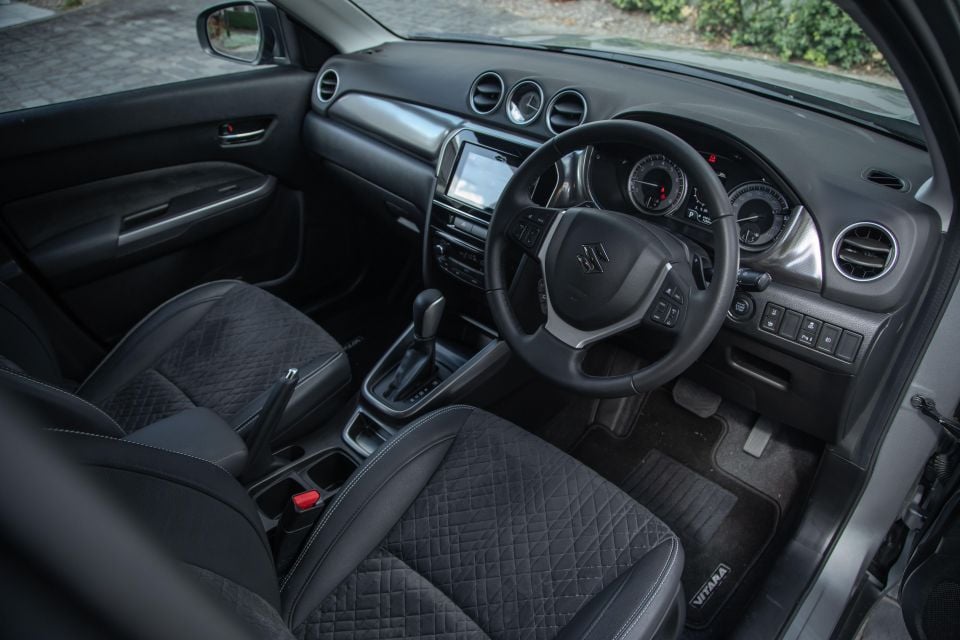
The cabin design is fairly austere and workmanlike bar the odd flourish to bring a bit of a lift to the ambience, such as the shiny speckled dash trim and well-presented blend of partial leather and suede trim, the latter creeping into the door trim inserts.
Otherwise, this $30,000 vehicle feels all the part like a $23,000 Vitara, which is technically the case.
The leather-trimmed wheel and soft-padded dash trim present well, though they barely distract from the sea of very shiny plastic, most conspicuously atop the door trim and around your knees. There’s some hard-wearing honesty to the effect, but little of the cabin aims upmarket.
The console, too, is a featureless array of plastic cubbies that rattle with anything stowed inside, including square cupholders. From the manual seat lever to the monochrome LCD climate control display it’s pretty basic and, neat carpet mats apart, there’s not much to remind that you’ve splurged on the Turbo version.
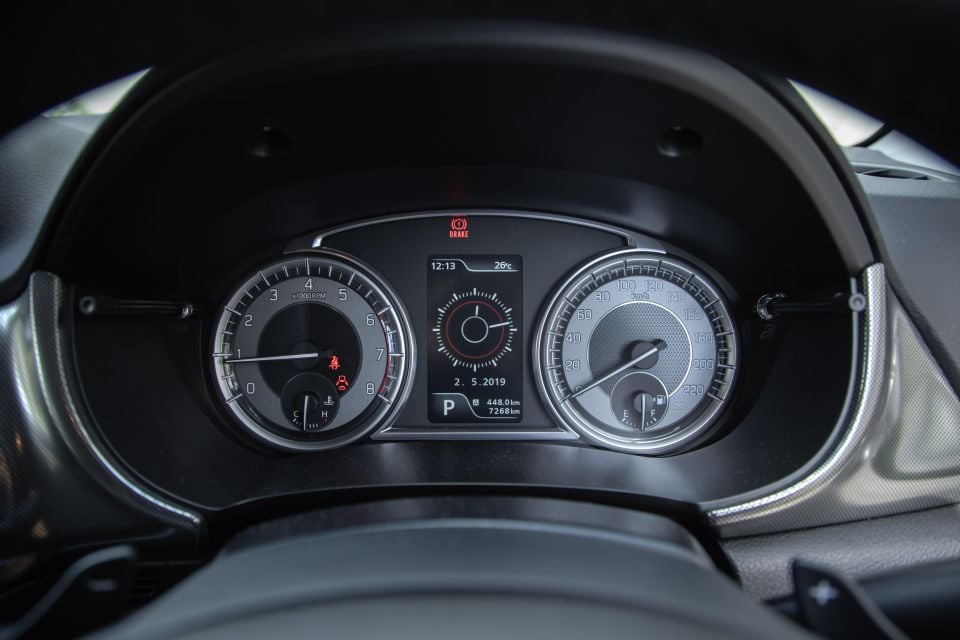
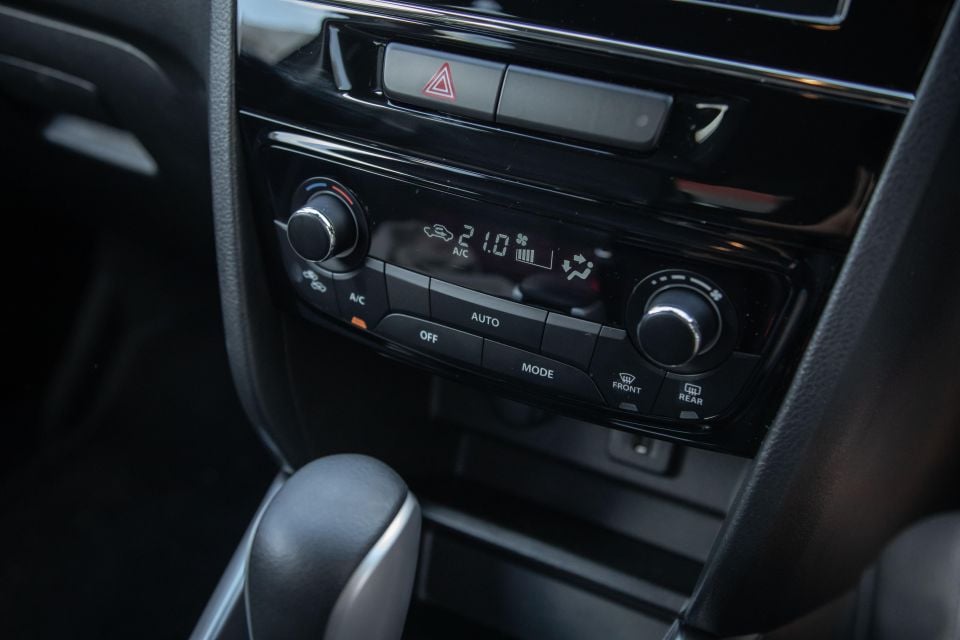
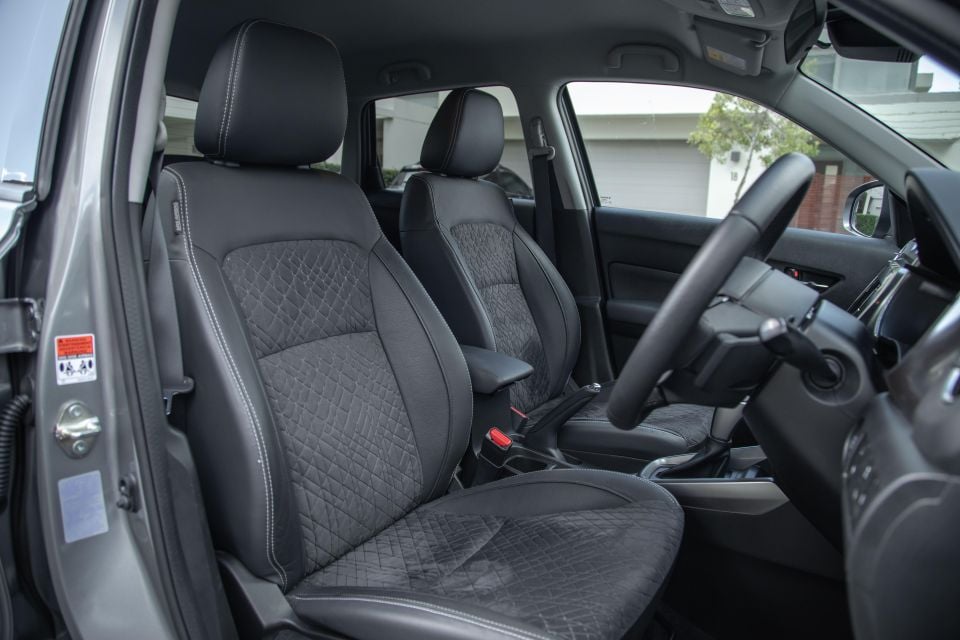
Up front are single 12-volt and USB ports, so you can only charge one device without a 12-volt adaptor. Bar the rudimentary if perfectly functional proprietary sat-nav, the modest 8.0-inch unit’s features are pretty slim and the lack of DAB+ radio is, in 2021, an oversight for any $30,000 vehicle.
Ditto the driver’s screen, which can display all manner of data including and power and torque meters but strangely lacks a digital speedometer, which would be handy given the white on silver script of analogue speedo isn’t the last word in quick-glance legibility.
The front seat bases – and the rears for that matter – are set quite high and the generous glasshouse means outward visibility is excellent bar from a pair of quite chunky, vision-obscuring A-pillars. I do wish you could drop the driver’s seat lower and the flat seatback could be a little more comfy and offer a bit more lateral support.
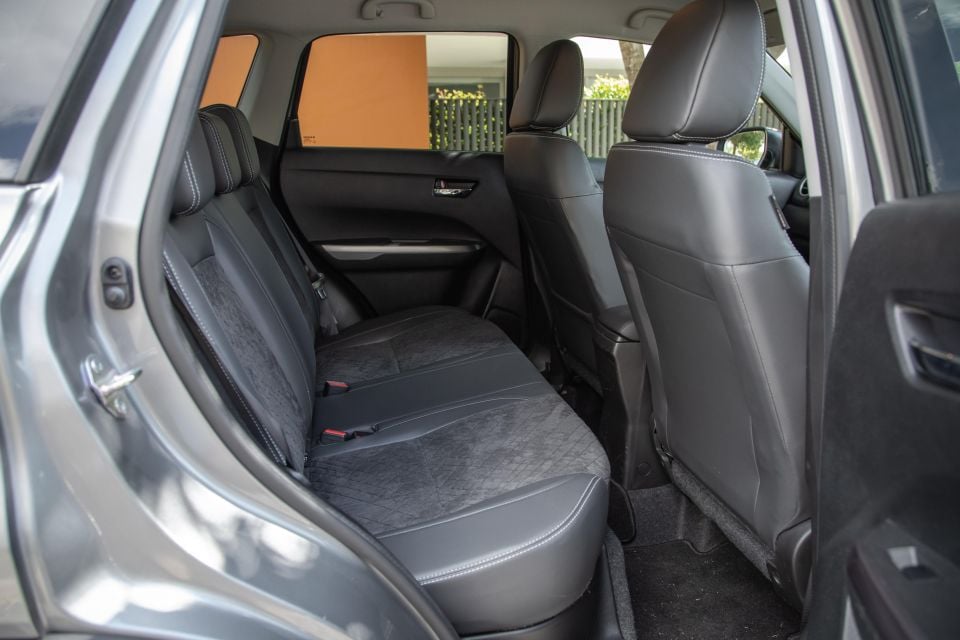
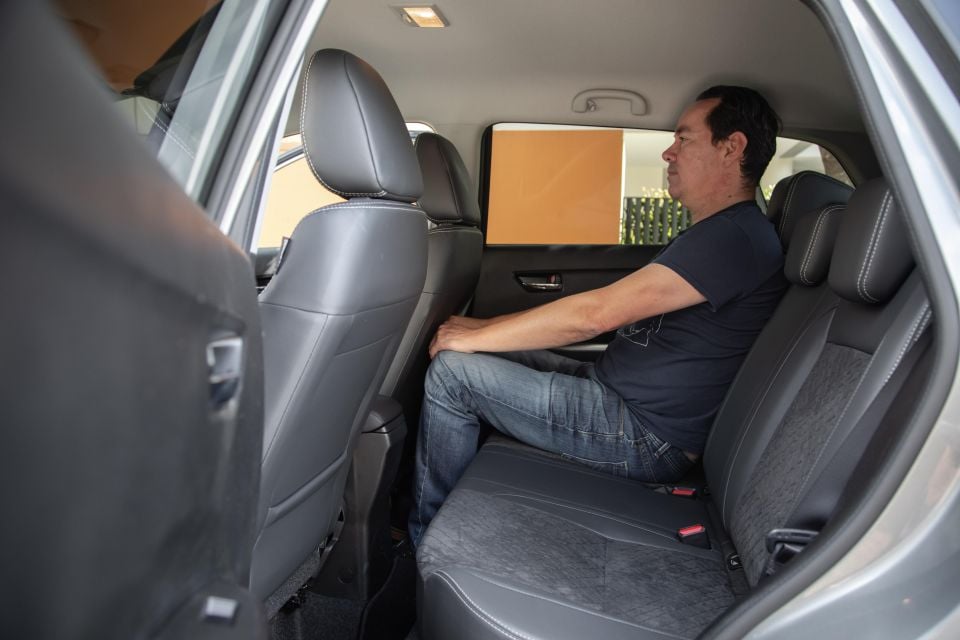
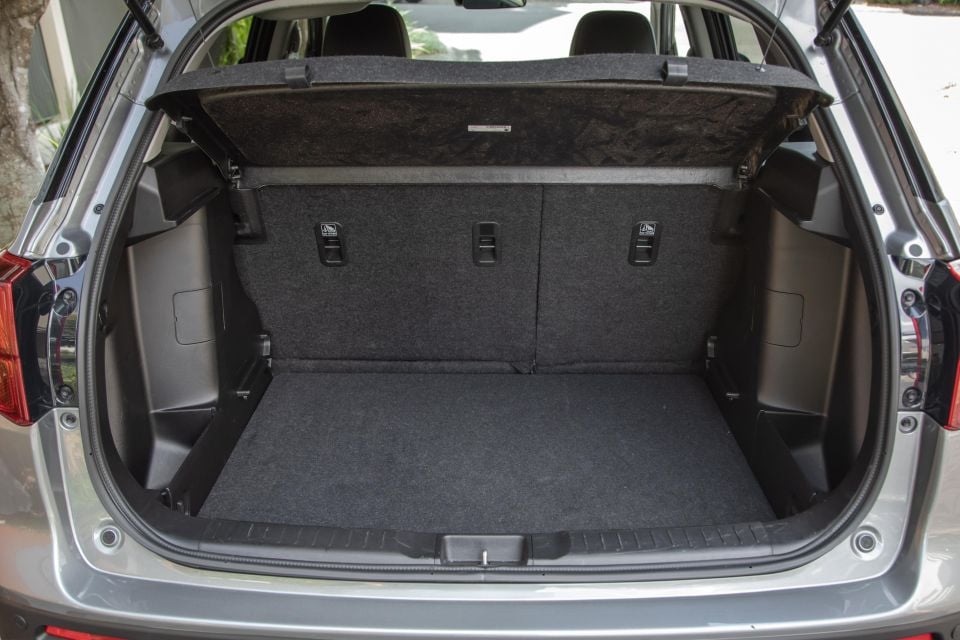
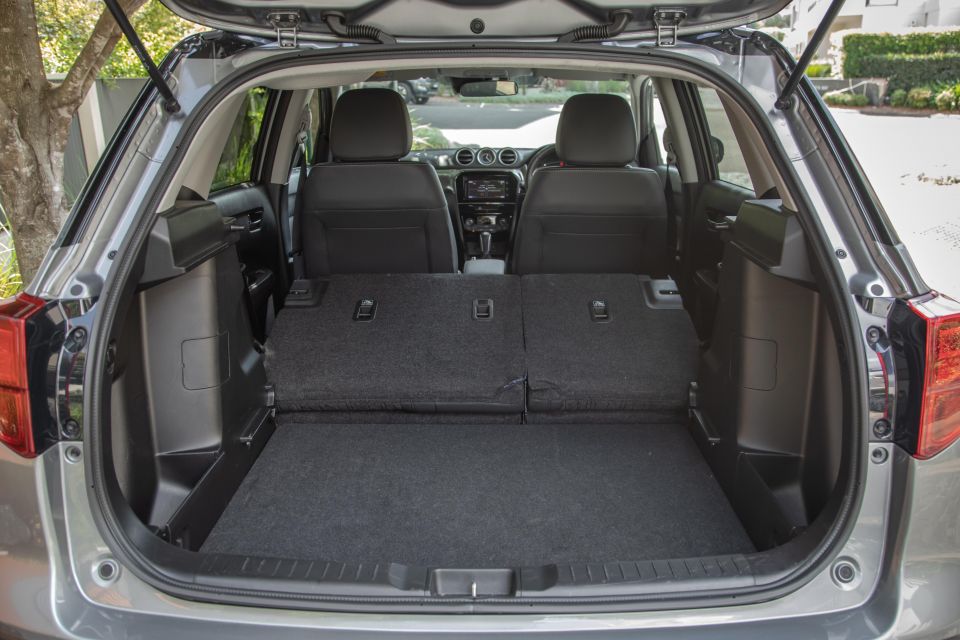
Row two is reasonably cosy with not a lot of knee room, exacerbating the sense that the cabin feels short – indeed, its concise 4.2 metres overall length confirms the Vitara looks bigger than it actually is. Bar a pair of bottle holders in the doors, it’s desperately short on second row creature comforts: no centre armrest, cup holders, air vents or device power.
Boot space is 375 litres that converts to a modest 710 litres with the 60:40 rear split-fold seating stowed, though there is a dual-layer floor some buyers might find handy: high for easy load-in, low for extra space, and you can tilt it to ‘capture’ your grocery bags to stop them rolling around the boot. The space saver spare is stowed under the ‘second floor’.
All in all, the Vitara Turbo cabin is a little too plain and a touch downmarket compared with some of the finer SUV competition out there vying for similar coin.
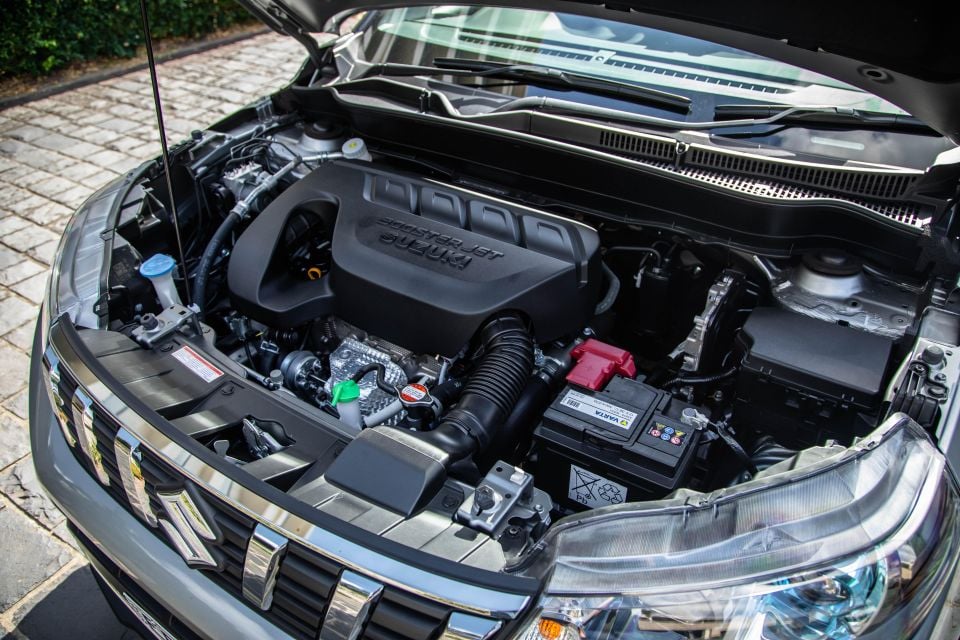
What the feisty little ‘BoosterJet’ force-fed 1.4-litre lacks in capacity it offsets with reasonably healthy torque for its size, its 220Nm from 1500rpm doing the lion’s share of the heavy lifting during around town driving. Power is a decent 103kW at 5500rpm.
By comparison, that’s a fair hike over the 86kW and 156Nm of the base version’s naturally-aspirated 1.6-litre.
The engine is mated to a conventional six-speed auto with paddle-shifters, the front-driven powertrain returning a claimed consumption figure of just 5.9L/100km, making it the most frugal of the self-shifting Vitara stable.
On test, during mostly urban driving, the Turbo returns real-world consumption closer to the mid-sevens mark, which is about what we found with the base Vitara during that version’s review, though the force-fed versions do require 95RON premium fuel. The fuel tank holds 47 litres.
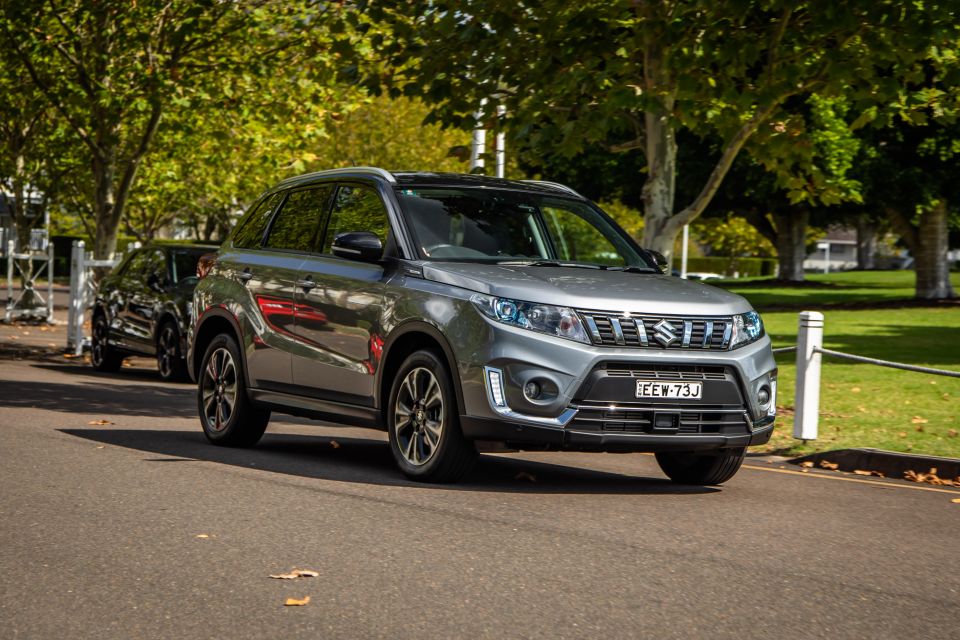
The real trump card in the package is the engine. The little BoosterJet 1.4 is quite energetic, pulling hard from the depths of the rev-range and remaining strong as the tacho needle rises, though there’s enough go in reserve that it’s easy to ride the mid-range torque to maintain handy pace.
The engine is quite raspy under full load, though not to much detriment. And while the auto is hardly the last word in intuitive response, it does get around to plucking the right forward ratio for whatever situation it finds itself in.
One annoyance is that the M (for manual) setting is directly below the D (for drive) slot in the transmission selector, and seven out of ten times you come out of park or reverse you inadvertently land in the manual setting.
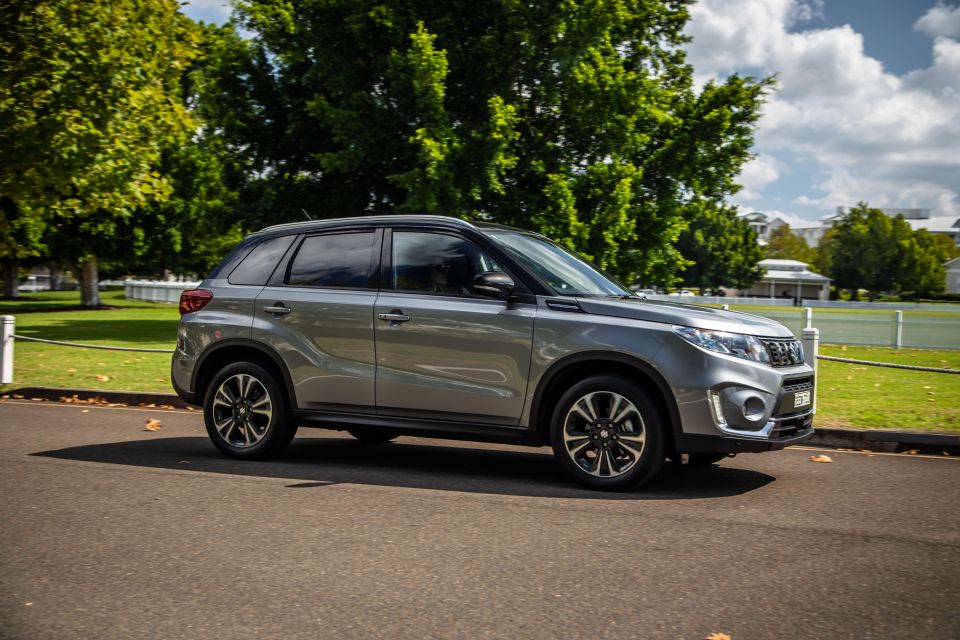
The ride and handling balance is acceptable, a mixture of slightly firm ride compliance that gets a bit terse over speed bumps and a bit of wallowing while the suspension settles down, suggesting it’s a little under-damped.
It doesn’t negotiate rougher surfaces and lumpiness badly at all, though nor does it really feel all that resolved in doing so.
One big plus with Vitara Turbo is that, at 1185kg kerb, there’s not much of it to inhibit its keenness in hooking through a corner or changing direction. And hook it does, though the slightly floaty nature of the suspension does rob it of a sense of certifiable body control and, with it, a touch of fun factor.
Meanwhile, the steering is cooperative enough, although it lacks a bit of fluidity off centre on the move and demands a bit too much effort for small steering correction. It’s also unnecessarily heavy and under-assisted at parking speeds, though not by a large measure.
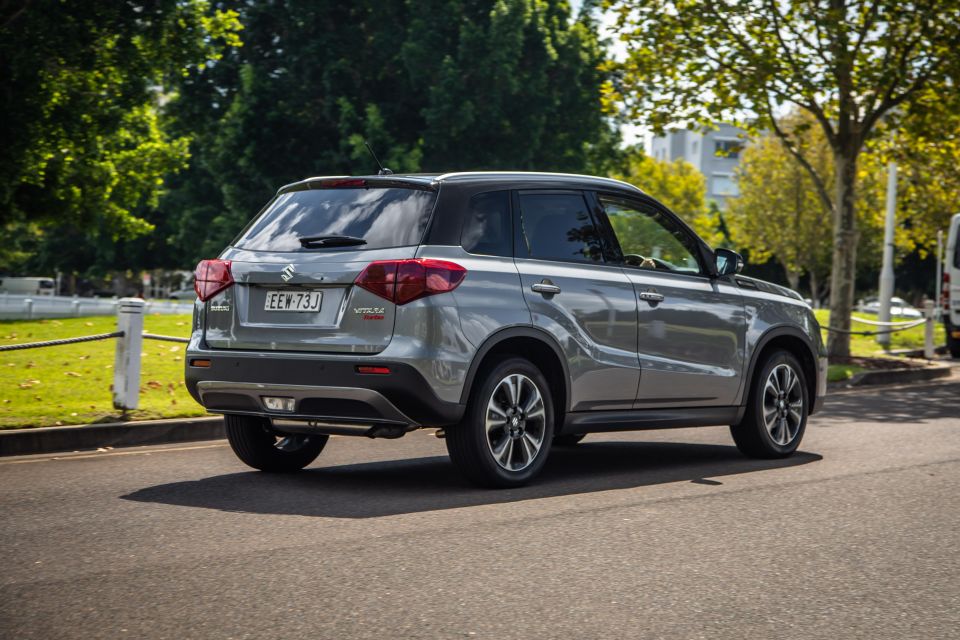
Where expert car reviews meet expert car buying – CarExpert gives you trusted advice, personalised service and real savings on your next new car.
Its concise form and generally excellent outward visibility – bar the chunky A-pillars – means it’s easy to park in even tight urban car spaces, even though the reversing camera suffers a little from slightly grainy and distorted display.
All in all, it’s a competent enough experience on road that doesn’t really misstep nor shine overly brightly except when you but the boot in, where there’s enough fire in its belly to make some fairly impressive haste from A to B.
But as a comfy and well-rounded family hauling experience, it comes up a bit short against some of the finer competition in its segment.
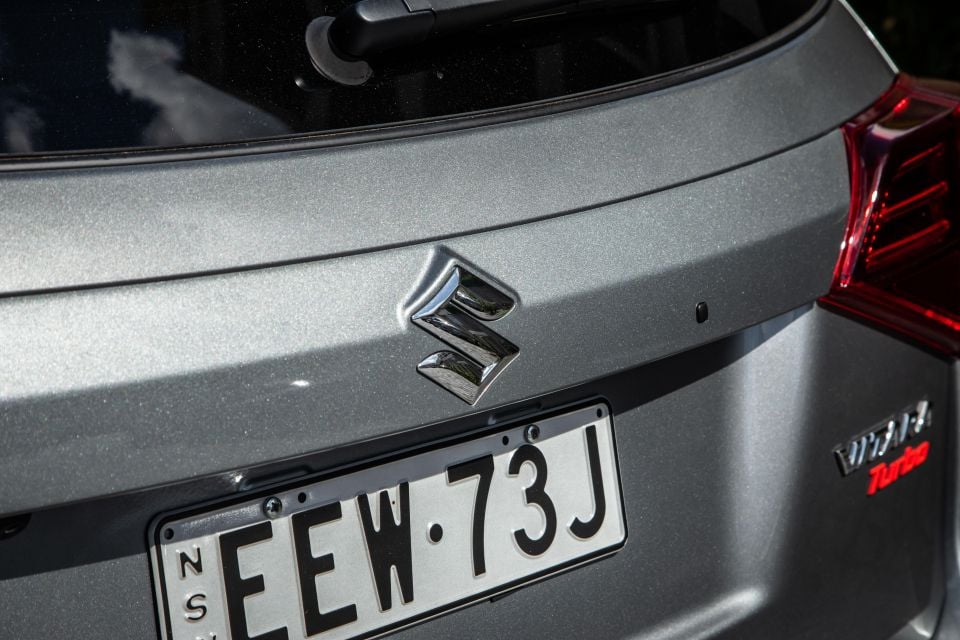
Suzuki offers a decent five-year, unlimited-kilometre warranty with capped-price servicing through the first five years of ownership.
Maintenance intervals are 12 months with a short 10,000km cap per visit – the 1.6-litre Vitaras have longer 15,000km gaps.
Interval costs are capped at $239, $329, $239, $429 and $239 through the first five visits (60 months/50,000km), which averages out to $295 per year.
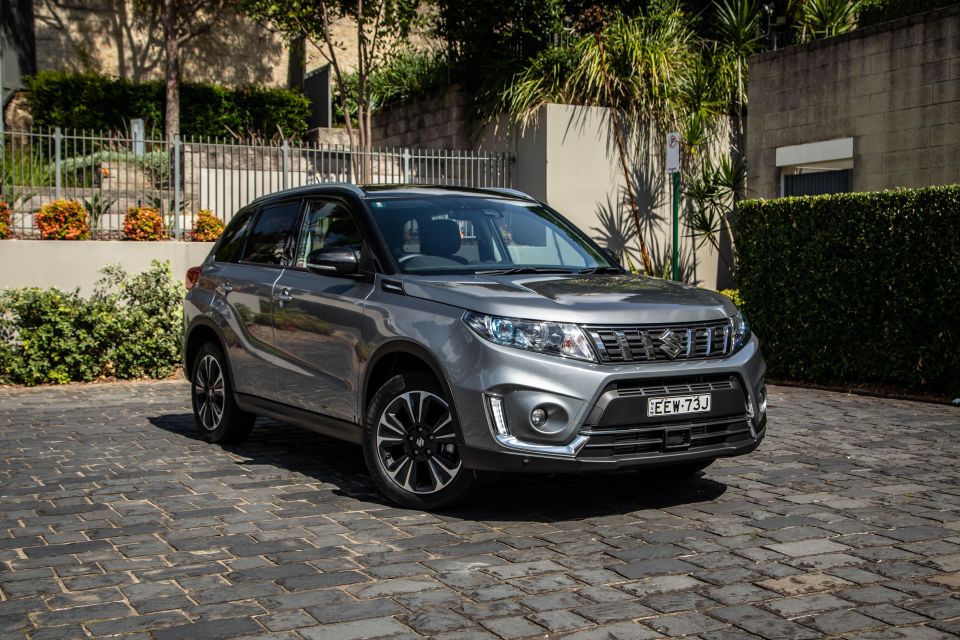
Its lusty little engine, lithe nature, broad safety coverage and competitive pricing makes for a car that will certainly find favour with many buyers. But it’s really better-suited as a low-flying city-bound crossover and more of a lifestyle proposition than it is an accomplished all-rounder and fine family hauler.
The Vitara is starting to feel its age a bit, albeit in smaller details that could’ve been spruced up a bit in the last facelift.
That said, the Vitara remains one of Suzuki’s classier and more contemporary offerings. And it’s really the mid-spec Turbo, with its want-for-little enthusiasm and safety kit, where the nameplate really shines.
The pick of its own crop? You bet. But don’t let its poke cloud your judgment too much when cross-shopping the Vitara Turbo with the slew of other small-SUV alternatives out there.
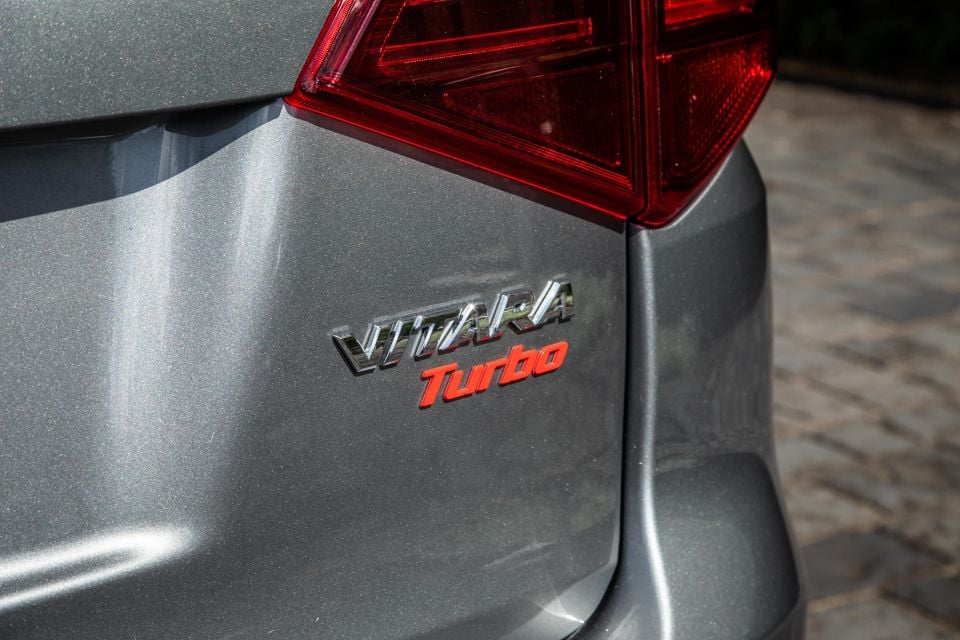
Click the images for the full gallery
MORE: Everything Suzuki Vitara
Where expert car reviews meet expert car buying – CarExpert gives you trusted advice, personalised service and real savings on your next new car.


Damion Smy
8 Hours Ago
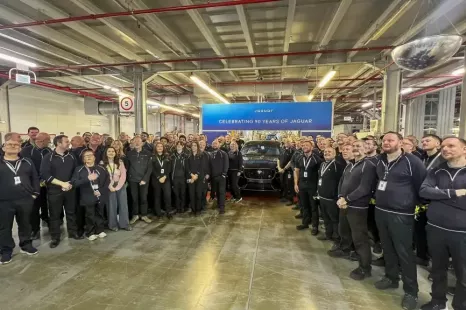

Damion Smy
11 Hours Ago
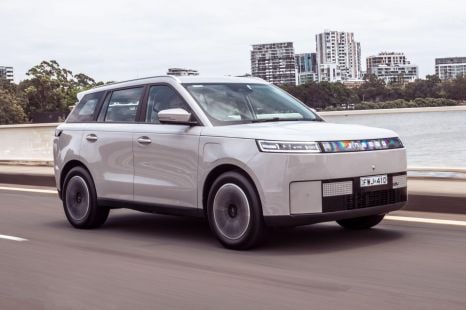

Josh Nevett
13 Hours Ago


Josh Nevett
13 Hours Ago
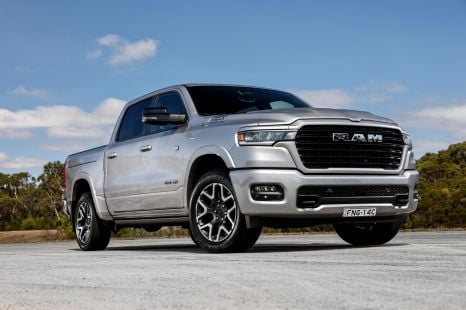

Damion Smy
14 Hours Ago
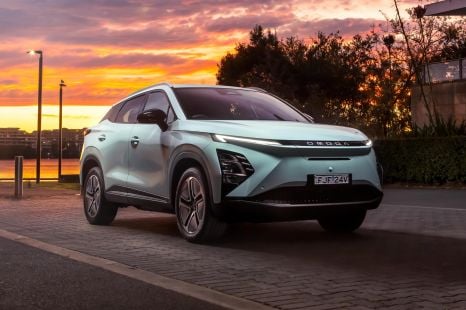

CarExpert.com.au
14 Hours Ago